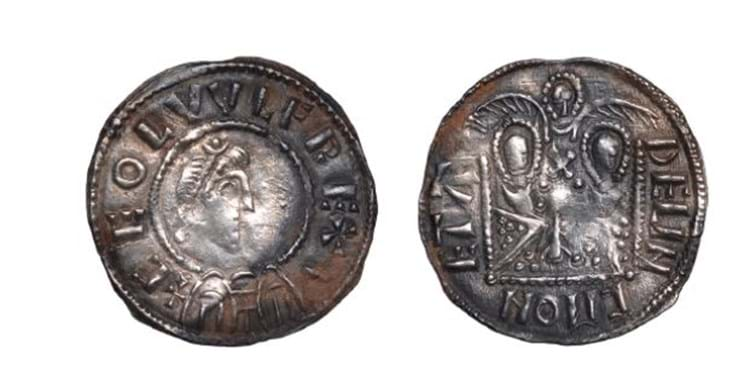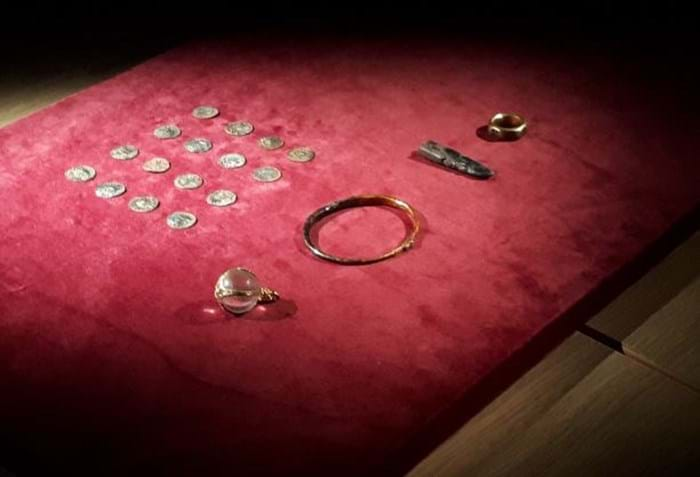
Coins previously recovered from the Herefordshire Hoard. Images: West Mercia Police.
The two men, who were first arrested in May 2019 following an undercover police operation, were sentenced on May 4 for five years and two months each for offences of conspiracy to sell criminal property and possession of criminal property.
Craig Best, 46, of South View, Bishop Auckland, and Roger Pilling, 74, of Loveclough, Lancashire, had denied conspiring to sell criminal property at Durham Crown Court during a two week trial.
Sentencing them for offences of conspiracy to sell criminal property and possession of criminal property, he jailed them for five years and two months each.
The Durham case is one part of two separate investigations in relation to a treasure hoard worth more than £3m which had been discovered near Eye in Herefordshire.
The first was led by West Mercia Police and was followed by this separate investigation by Durham Constabulary.

Previously recovered items from the Herefordshire Hoard. Images: West Mercia Police.
The Herefordshire Hoard comprised 300 coins found by two different metal detectorists in 2015. In 2019 the two men who had found the hoard using metal detectors were sentenced to 18 years for not declaring them under the Treasure Act. Just 29 coins were recovered in this case and a further 44 in the Durham investigation.
In Durham during Best and Pilling's trial, Judge James Adkin said the sentencing exercise would be "complicated" as the offence was rare.
Remanding them in custody, he said: "You have both been convicted of what I consider to be compelling evidence of serious criminality, in relation to these artefacts.
"You are both aware of what the sentence is likely to be, imprisonment for years."
The hoard contained a mixture of ornaments, bullion and coins, typical of Viking hoards of the 9th and 10th centuries in Britain.
According to West Mercia Police the coins included “several examples of a type which is helping scholars to rewrite English history”.
A type of two-headed coin bearing images of both King Alfred the Great of Wessex (871-99) and his contemporary Ceolwulf II of Mercia (874-9), are particularly rare. To have two emperors standing side by side, symbolising an alliance between the two kings, was unheard of.
The coins suggest the two kings were much more closely aligned than historians had been led to believe. Historical sources, mostly written at Alfred’s court some years later, portray Ceolwulf in a very different light, as a puppet of the Vikings. Instead this two-headed coin demonstrates the allegiances of power during that period were very different to what had previously been believed.
Under the Treasure Act, finders of items deemed treasure (including rare and precious archaeological finds more than 300 years old) must notify the relevant authorities within 14 days.
Discoveries of treasure are assessed by a coroner, valued by a panel of experts, and then museums are given the chance to raise funds. The money raised from a sale is then split between the finder and the landowner of where the items were found.





